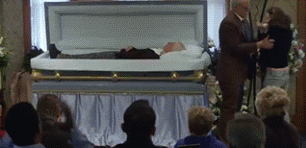Conventions:
The conventions literally mean something that is usually done or associated with. They are the norm where normal parameters where movies or TV programmes fall into during the opening sequence. There are many variations such as:
Purpose - hooks the audience and conveys genre, mood etc.
Timing - this is the time of the opening sequence which normally lasts 2-5 minutes.
Sets the scene - (relatively self explanatory)
Introduces key characters: protagonist, antagonist, sidekick etc.
Key credits: such as the director, headline actor, producer etc.
Equilibrium: the key event that kick starts the movie usually takes place in the opening scene.
Introduces pre-plot: establishes the platform or scene.





Codes: the codes are in three categories that allow the director to convey a message to the audience.The 3 categories are:
Technical Codes: these include camera techniques, framing, depth of field, editing, lighting and Mis en scene.
Symbolic Codes: these refer to objects, clothing, colour etc. For example red lighting = danger.
Written Codes: these come in the form of headlines and other text.

An example: (Harry Potter and the Philosopher's Stone opening)
Equilibrium: the key event that kick starts the movie usually takes place in the opening scene.
Introduces pre-plot: establishes the platform or scene.
Codes: the codes are in three categories that allow the director to convey a message to the audience.The 3 categories are:
Technical Codes: these include camera techniques, framing, depth of field, editing, lighting and Mis en scene.
Symbolic Codes: these refer to objects, clothing, colour etc. For example red lighting = danger.
Written Codes: these come in the form of headlines and other text.
An example: (Harry Potter and the Philosopher's Stone opening)
Conventions -
Purpose: the purpose is to hook the audience to watch the film and to become engrossed with the series and also conveys the fantasy genre.
Timing: 4 minutes.
Sets the scene: a dark night in the UK or more specifically a suburban street called Privet Drive.
Introduces key characters: Dumbledore, McGonagall, Hagrid and the main character, Harry Potter.
Key Credits: this example doesn't really show the cast however it does show the Warner Brothers logo which tells the audience which movie studio the franchise belongs to.
Equilibrium: the magical element of the film is established and baby Harry Potter is left at the doorstep of the Dudley family.
Introduces pre-plot: already we know that Harry Potter has special relevance in the magical world and there are deadly threats that must be faced.
Codes -
Technical: there are varying camera shots and angles along with different lighting tones and accents changing the mood of the scene.
Symbolic Codes: the key one in this scene is that Harry is placed in the only bright light in the scene symbolizing that he will be the light in the darkness that surrounds him.
Written Codes: the reconcilable Harry Potter lettering and titles shows instantly that the film will have a magical tone that will be bright (due to the golden colour of the typography).
Here is a easy way to see how conventions work with codes:


